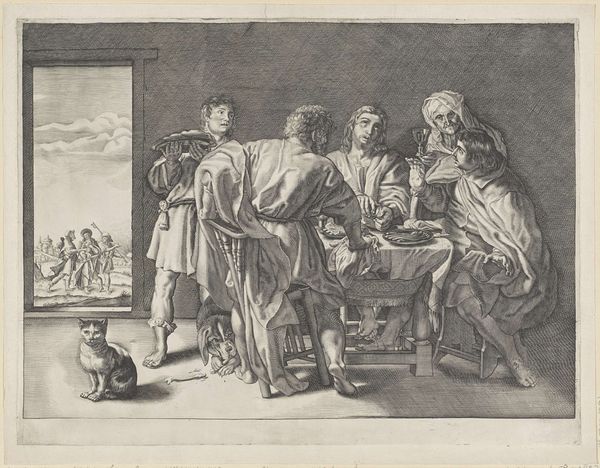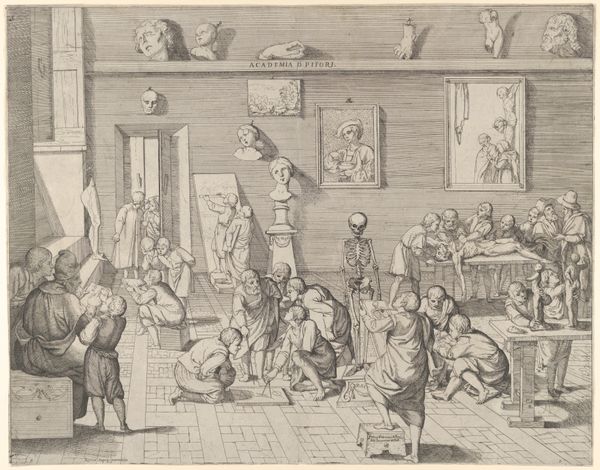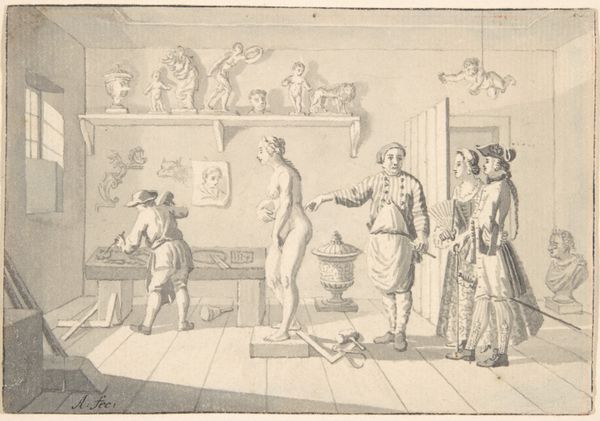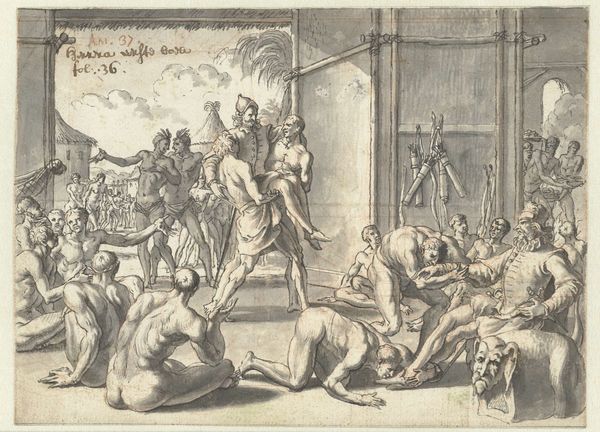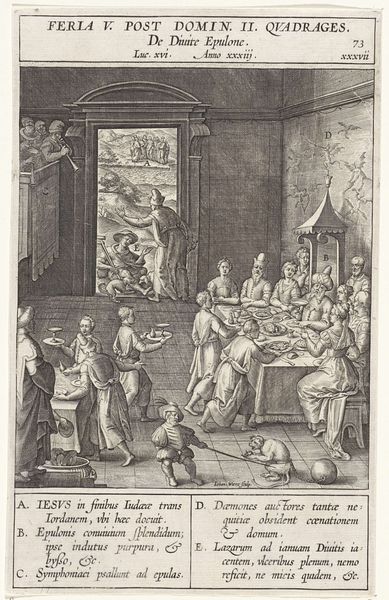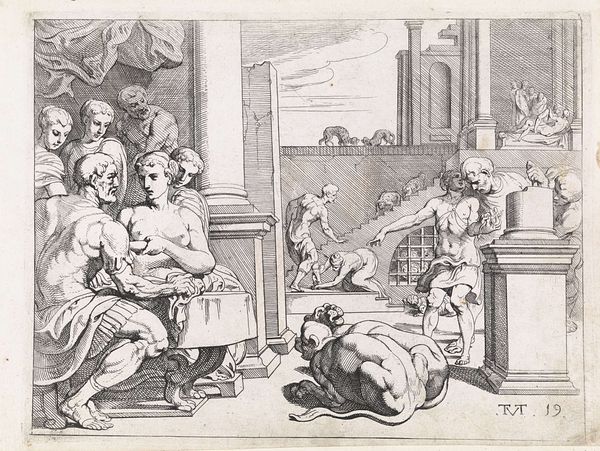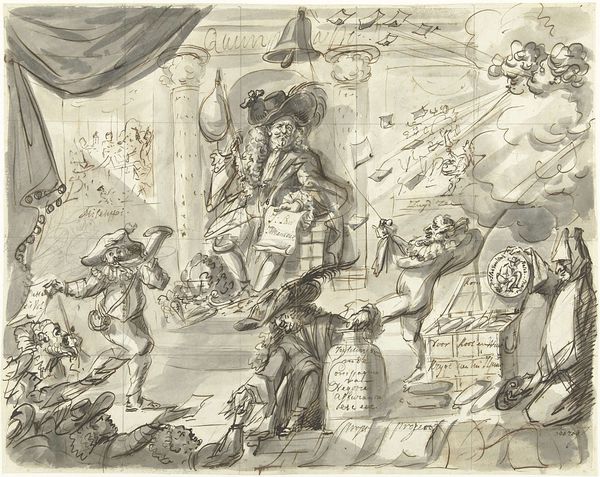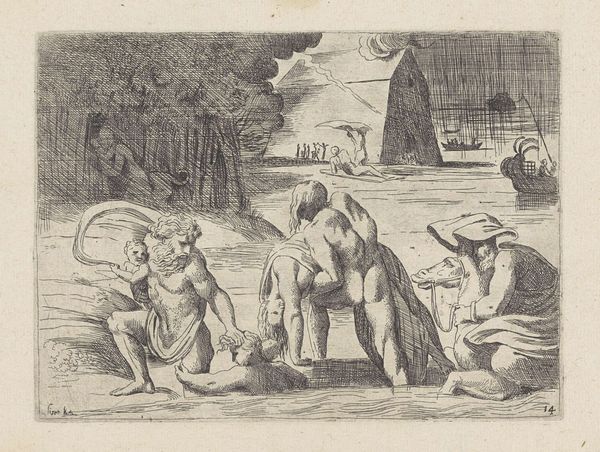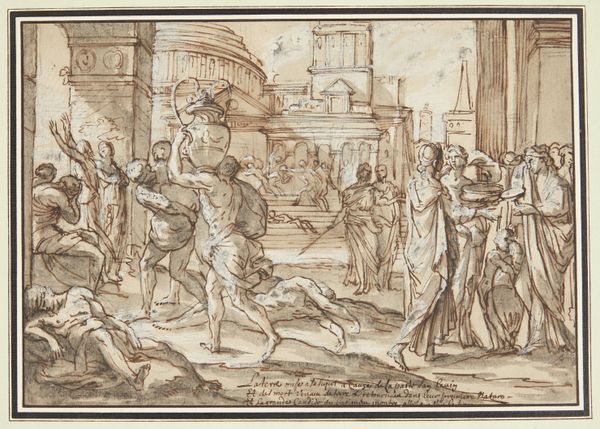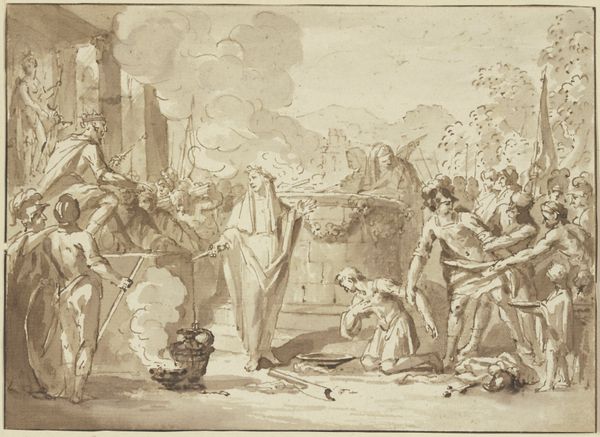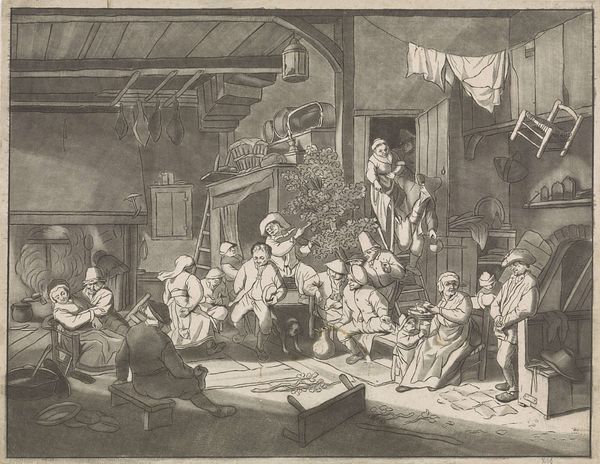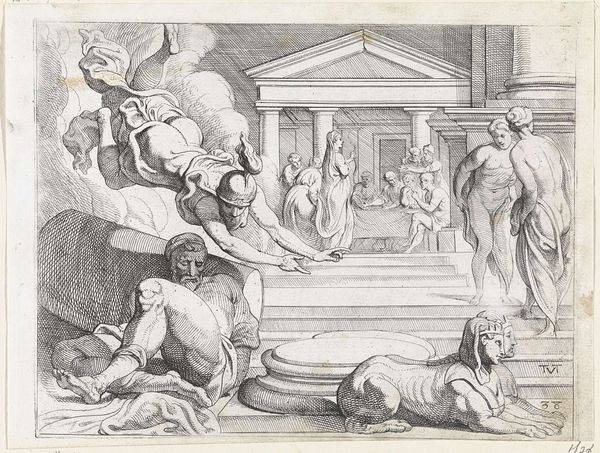
Dimensions: height 261 mm, width 386 mm
Copyright: Rijks Museum: Open Domain
Editor: This is "Interior of the Inn in Lapide near Brindisi" created by Louis Ducros in 1778 using ink on paper. It has a very matter-of-fact feeling. Everyone is in their own world, doing their own thing, with a definite emphasis on labor, wouldn’t you agree? What stands out to you when you look at this drawing? Curator: Certainly. Note the variety of actions, yet each rendered with a similar weight. We should consider the material reality of an 18th-century inn. This isn't some romanticized vista. Consider Ducros's choice of ink—practical, readily available. The paper too, serves as a surface that absorbs and reflects light, a direct contrast to the lives lived within those walls. Where did Ducros source these materials, and how might the location of that labor affect what’s represented? Editor: So you're less focused on the scene depicted, and more on the creation itself. That's really interesting, looking at it now I hadn’t thought about the ink and paper choice itself as a potential commentary. Curator: Exactly. Consider those animal hides on the wall. Their very presence points to processes of animal slaughter, skinning, and tanning. Their utility transcends decoration and leads us back to questions of human needs and raw production within the economy of everyday life. Editor: That’s fascinating. It is almost like he is deliberately forcing us to notice them. Curator: The interplay of figures, from the drinking men to the mother with her child, reflects specific social relationships dictated by necessity, the division of labor within that small community. What needs are being fulfilled? What system facilitates this moment of time and place? These are questions evoked by the careful arrangement and documentation. Editor: It really changes my view. Initially I just saw it as a glimpse into a past, but it's so much more intentional than that. Now it feels like he has made sure nothing gets left out of view in terms of manufacture. Curator: Precisely, we begin to unravel assumptions and confront ourselves with realities beyond simple representation. This is something Ducros makes undeniably clear for us.
Comments
No comments
Be the first to comment and join the conversation on the ultimate creative platform.

